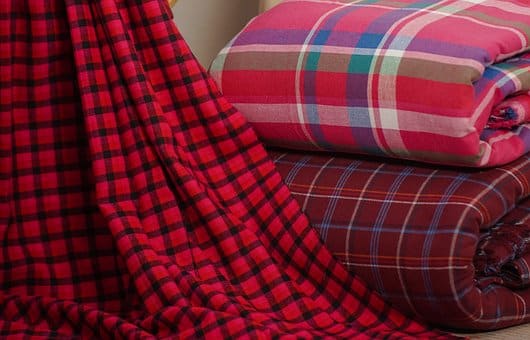
Mud Cloth – Indigenous and Characteristic Fabric Of Africa
African fabrics are emblematic of their rich cultural heritage. Everything about them is extraordinary – from exotic colors, motifs to indigenous prints. They appear very close to nature. You can use them in sewing beautiful clothes of your choice, in home décor and other creative pursuits. From local markets, today African textiles have gained a strong foothold in the global market. Among African fabrics, Mudcloth deserves special mention. They are very typical of Africa. Various types of African garments are manufactured with this fabric from regular to formal and fashion wear.
Mud cloths have different designs and each one of them has a story to tell. The color, texture, symbol, design, making – each one has a different meaning. However, meanings might differ depending on the region, ethnic group or individual. In general, mudcloths portray local occupations, plants & animals, events, characters, scripts, proverbs and rituals, but can reveal other important and deeper meanings as well. African people really take pride in wearing garments, both formal and informal made out of Mudcloth. There are endless varieties of this fabric. Not only clothes, various accessories are also manufactured with mudcloth like hats, scarves, bags, purses, table runners, sashes, cushion and quilt covers, paintings & wall hangings among others. Popular African fashion clothing manufactured with mudcloth include long dresses, trousers, kaftans, suit & hat sets, dashikis, unisex top and pant sets, skirts etc. There are also every day wears.
Of late, mud cloth has become extremely popular in the West. Many renowned designers are showcasing their creations made out of mudcloths in international ramps. This hand-spun, hand-woven and hand-dyed luxurious fabric has been embraced by Westerners like never before. They are using it for making clothes as well as decorating homes. Manufacturing mudcloths are a lengthy process. The best thing about them is that they are 100% cotton and hand-made. Normally men weave the cotton thread on a hand-held loom and women paint and design the cloth. Depending on weather conditions, it takes about four days to a whole week to complete the entire piece of mud cloth. Each artist preparing mudcloth learns and studies a specific design over a considerable period of time. The mudcloth is first set by an adhesive solution made out of tea. Then the designs are hand painted with natural dyes and the tea sets on to the fabric. The mud used to make mud cloth is usually mixed with water and kept aside for almost a year. Twigs or metal instruments are used to paint the designs with mud.
Even the color of each mud cloth carries particular meanings. The most common and traditional one is black background with white motifs. There might be particular stories, folklore or popular African proverbs involved. Other colors quite popular and often used are rust, cream, gray, bright reds, purple, yellow, orange etc. There are also mud cloths of various color combinations. Mud cloth at one time was used by the West African warriors and hunters to camouflage themselves or as a badge of status. African weavers keep on inventing interesting colors and patterns throughout the year to attract customers throughout the world. Since mud cloth is close to the soil, the colors also reflect the same earthy look and feel.
Create your own fashion statement with a mud cloth apparel today!
[ad_2]Source by Prabir Das